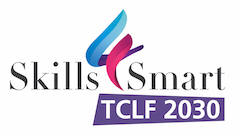The SDGs at a glance
In 2015, the UN approved the 2030 Agenda for Sustainable Development, an international agreement signed by 193 countries, which means an opportunity for countries and their societies to embark on a new path towards a better and more sustainable future.
This initiative seeks to address the global challenges the world is facing, from eradicating POVERTY and reducing INEQUALITY, to reversing CLIMATE CHANGE and ENVIRONMENTAL DEGRADATION, among others.
This is how the 17 Sustainable Development Goals (SDGs) came about, which in turn include 169 action targets, which will be measured through a general framework of 230 indicators agreed in 2016 and which will be used as a reference. They address the fundamental causes of poverty and the violation of human rights and propose changes for all people and the planet from the three fundamental dimensions: economic, social, and environmental.
To date, global efforts have been insufficient to successfully meet the SDGs by 2030, according to the UN’s 2020 Sustainable Development Goals Report. Furthermore, the global health emergency we are currently experiencing due to COVID-19, which has led to an unprecedented health, economic and social crisis, makes it even more difficult to achieve these Goals
On the business side, the report calls for recovery plans to facilitate the shift to a low-carbon, climate-resilient economy. In this respect, European industry, including the footwear and components industry, as a stakeholder for change, must integrate the sustainable development goals into their activities and make a commitment to contribute to their achievement and, therefore, to the sustainable development of the sector.
The footwear sector today
On a global level, the footwear sector is an activity whose tradition and roots in some regions constitute as a major driving force in terms of the economy, society, and culture.
In the last two decades, technology in footwear manufacturing has evolved intensely, affecting all traditional operations and, especially, product design, which is increasingly subject to and dependent on the influence of fashion and new social trends.
The sector’s economy has been influenced by the incessant activity and competition from Asian imports, in addition to the outsourcing by most European countries of the footwear manufacturing activity and acquisition of components and raw materials. This increased globalisation of the sector has changed the rules compared to those traditionally in place.
For instance, in Spain, the footwear sector plays a very important role in significant parts of its territory, highlighting the eastern area of the country, where footwear manufacturing has been one of the major economic drivers and whose tradition is still reflected in the generational change. Here we find a quality product that adapts to new times and market trends.
One of the most significant trends that is already present in all sectors and industrial activities is that which comes from the social movement that defends a future towards sustainability, in which ideals based on equality, human rights and respect and preservation of the environment in all areas predominate, in line with European policies that seek to reverse the effects of climate change and environmental degradation such as the European Green Deal. This new trend has triggered in the footwear sector a new challenge of commitment, development and innovation that covers from the choice of raw materials to the design of the final product, the environmental and ethical characteristics of the product being an essential requirement for the market and the end customer.
Today, the Covid-19 pandemic has caused an unprecedented global health crisis, accompanied by an economic recession, which threatens industrial production. The paralysis of productive activity and the severe cash flow restrictions are putting the survival of the industry and millions of jobs at serious risk, as is the case of the footwear and related industries.
In this respect, the recovery plans now emphasise measures to revive production and marketing of products and set the course for a new normality. This has also accelerated the twofold transition towards a circular economy and digital leadership in which the European footwear industry is immersed.
The new sustainable industry 4.0 production paradigm based on research, innovation and technology will now contribute to the modernisation of companies and their production processes to make them more flexible and resilient, with reduced environmental impact, able to adapt to changes and emergencies with agility, and to develop products capable of meeting customer demands; and that is because the customer experience is considered the new differentiating factor in the digital age. Therefore, companies and their production systems must address the meeting of a market demand for new industrial products in a post-Covid-19 world, in a responsible, sustainable, feasible and healthy way.
The SDGs in the context of the footwear sector can make a greatest influence and contribution to the recuperation of the industry and its future growth. The most relevant are following:
| SDG | TARGETS |
| 3.9 Substantially reduce the number of deaths and illnesses from hazardous chemicals and air, water and soil pollution and contamination. | |
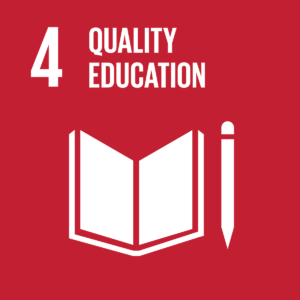 |
4.3 Ensure equal access for all women and men to affordable and quality technical, vocational and tertiary education, including university. 4.4 Substantially increase the number of youth and adults who have relevant skills, including technical and vocational skills, for employment, decent jobs and entrepreneurship. |
| 5.5 Ensure women’s full and effective participation and equal opportunities for leadership at all levels of decision-making in political, economic and public life. | |
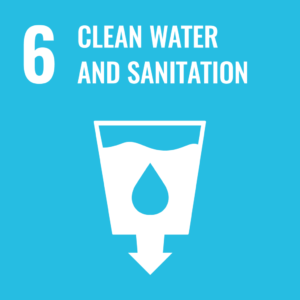 |
6.3 Improve water quality by reducing pollution, eliminating dumping and minimizing release of hazardous chemicals and materials, halving the proportion of untreated wastewater and substantially increasing recycling and safe reuse globally. 6.4 Substantially increase water-use efficiency across all sectors and ensure sustainable withdrawals and supply of freshwater. |
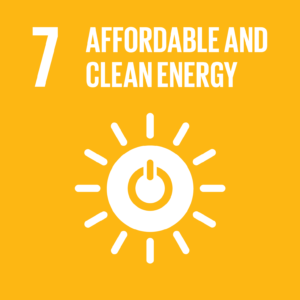 |
7.2 Increase substantially the share of renewable energy in the global energy mix.
7.3 Double the global rate of improvement in energy efficiency. |
|
8.2 Achieve higher levels of economic productivity through diversification, technological upgrading and innovation. 8.4 Improve progressively global resource efficiency in consumption and production. 8.5 Achieve full and productive employment and decent work for all women and men, including for young people and persons with disabilities. |
|
|
9.2 Promote inclusive and sustainable industrialization. 9.4 Upgrade infrastructure and retrofit industries to make them sustainable. 9.5 Enhance scientific research, upgrade the technological capabilities of industrial sectors. |
|
| 10.2 Empower and promote the social, economic and political inclusion of all, irrespective of age, sex, disability, race, ethnicity, origin, religion or economic or other status. | |
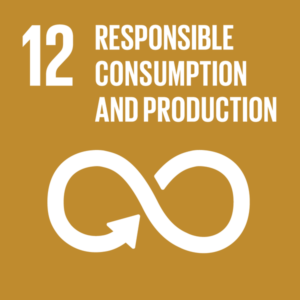 |
12.2 Achieve the sustainable management and efficient use of natural resources. 12.4 Achieve the environmentally sound management of chemicals and all wastes throughout their life cycle. 12.5 Substantially reduce waste generation through prevention, reduction, recycling and reuse. |
 |
13.2 Integrate climate change measures.
13.3 Improve education and awareness-raising on climate change mitigation. |
| 14.1 Prevent and significantly reduce marine pollution of all kinds, in particular from land-based activities. | |
| 15.1 Ensure the conservation, restoration and sustainable use of terrestrial and inland freshwater ecosystems. | |
|
17.6 Enhance North-South, South-South and triangular regional and international cooperation on and access to science, technology and innovation and enhance knowledge sharing. 17.7 Promote the development, transfer, dissemination and diffusion of environmentally sound technologies. 17.17 Encourage and promote effective public, public-private and civil society partnerships, building on the experience and resourcing strategies of partnerships. |
SDG 4: Quality education.
Among the most relevant SDGs for the footwear sector that can make the greatest influence and contribution it is worth to mention separately SDG 4: Quality education.
Education is the basis for skilled future generations that promote a more equitable and sustainable world; it is the master key to poverty eradication, the creation of decent opportunities and ethical socio-economic growth.
The footwear sector has been a traditional activity with deep roots in several areas in Europe; the knowledge developed over time has been transmitted from generation to generation. However, it is important to take this sector towards a greater professionalisation. There are several qualifications that offer quality training to all kinds of staff, which generates greater wealth of knowledge and better development and adaptation of the sector to this new age.
But at the same time, the crisis has accelerated the digital transformation and the move towards sustainability: it is therefore necessary to accelerate the development of skills so that footwear value chains and their members can become more resilient. Moreover, it is time for opportunities for job creation in new business models. For this, it is essential that learning and training are accessible.
Taking into account the actual situation and checking the targets for the quality education goal proposed in the 2030 Agenda for Sustainable Development, INESCOP, The Footwear Technology Centre, has selected targets 4.3 Ensure equal access for all women and men to affordable and quality technical, vocational and tertiary education, including university, and 4.4 Substantially increase the number of youth and adults who have relevant skills, including technical and vocational skills, for employment, decent jobs and entrepreneurship, as the most adequate targets to be addressed in the footwear sector. To achieve these targets INESCOP proposes these actions:
- Establish a training plan within organisations that covers the entire value chain.
- Promote lifelong learning among workers.
- Hire interns and thus increase their technical experience, favouring their access to the labour market.
- Train all workers on production based on sustainability.
- Promote training on technologies and applications for the sector that facilitate more efficient and sustainable production.
- Create partnerships with training centres.
- Promote the recruitment and training of young people from the local area where the organisation is located.
- Promote the transfer of knowledge and skills between different generations of workers.
Retrieved: 26/04/2021; Adapted by; Pérez, Rosa Ana (INESCOP); Translated by: Almodóvar, Esperanza (INESCOP)
